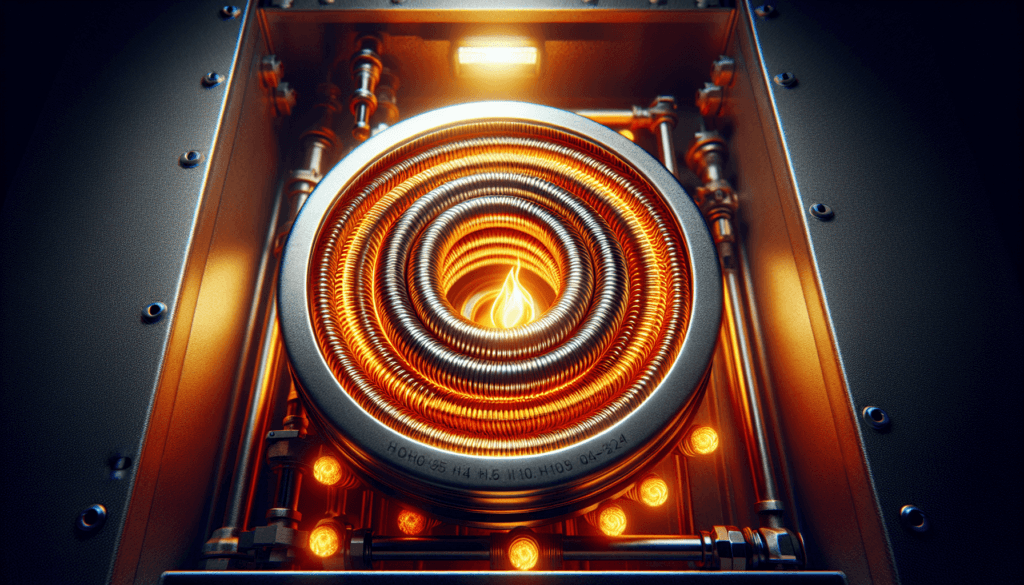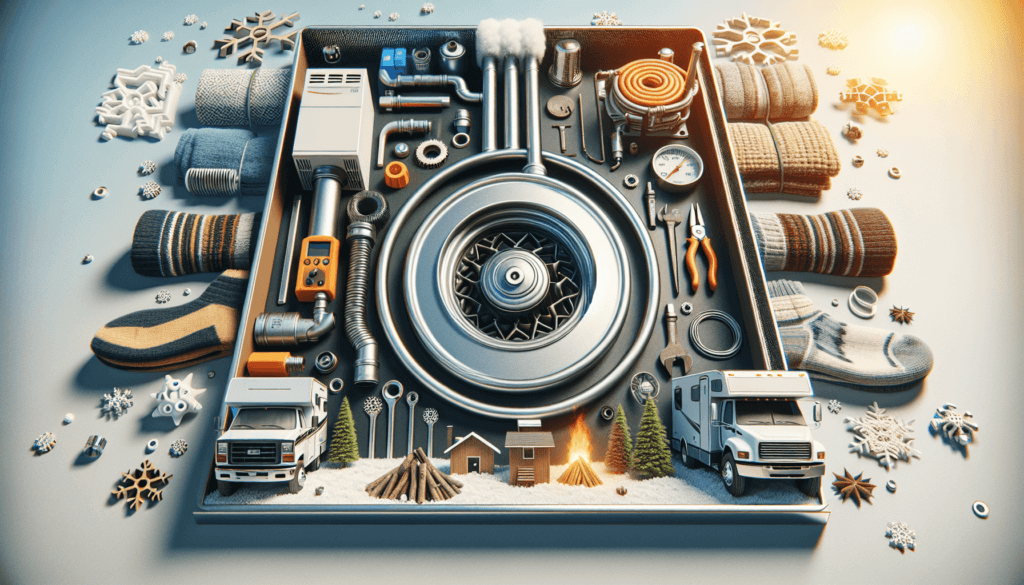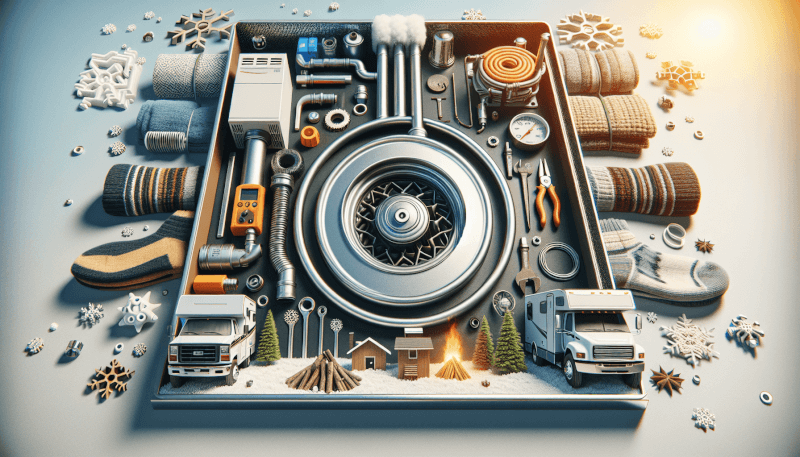Maintaining your RV furnace is essential for ensuring a comfortable and cozy journey on the road. With regular upkeep and maintenance, you can avoid unexpected breakdowns and costly repairs. In this article, we will discuss the importance of RV furnace maintenance and provide you with some handy tips and tricks to keep your furnace running smoothly. So grab a cup of coffee, sit back, and let’s dive into the world of RV furnace maintenance together!
Why is RV furnace maintenance important?
Maintaining your RV furnace is crucial for several reasons. First and foremost, regular maintenance ensures that your furnace operates with optimal efficiency and performance. By keeping your furnace clean and in good condition, you can maximize its heating capabilities, which is especially important during colder months when you rely on it to keep your RV warm and comfortable.
Another key reason for RV furnace maintenance is to prevent breakdowns. Regularly inspecting and cleaning the various components of your furnace can help identify any potential issues before they escalate into major problems. By catching these problems early on, you can avoid costly repairs or even complete furnace replacements.
Lastly, maintaining your RV furnace is essential for safety reasons. Neglecting maintenance tasks can lead to a buildup of dust, debris, or even obstructions in the vents and ducts, which can pose a fire hazard. Additionally, inspecting and cleaning important components such as the ignition system, gas burner assembly, thermocouple, and flame sensor ensures that everything is functioning properly and reduces the risk of gas leaks or other safety concerns.
Regular maintenance tasks
To keep your RV furnace in top shape, there are several important maintenance tasks that you should perform regularly. These tasks include cleaning the furnace, replacing air filters, inspecting and cleaning vents and ducts, checking and lubricating the fan motor, testing and cleaning the ignition system, inspecting and cleaning the exhaust vent, testing and cleaning the gas burner assembly, inspecting and cleaning the thermocouple, and inspecting and cleaning the flame sensor.

Preparing for furnace maintenance
Before diving into your furnace maintenance routine, it is essential to gather all the necessary tools and supplies. This may include a screwdriver, a vacuum cleaner with attachments, a soft brush, a replacement air filter, lubricant, a multimeter, and cleaning solutions specifically designed for furnaces.
Next, make sure to turn off the furnace and disconnect the power supply. This will ensure your safety while working on the furnace and prevent any accidents. Additionally, it is important to ensure proper ventilation in the area where you will be performing maintenance. Opening windows or using fans can help ventilate the space and prevent the accumulation of harmful gases.
Lastly, don’t forget to wear safety gear and clothing. This includes gloves, safety glasses, and a mask to protect your hands, eyes, and respiratory system from any debris or cleaning solutions.
Step-by-step guide for RV furnace maintenance
Here is a step-by-step guide to help you properly maintain your RV furnace:
Step 1: Cleaning the furnace
Start by removing the furnace cover and vacuuming any dust or debris that may have accumulated. Use a soft brush or cloth to wipe away any remaining dirt or grime. Pay special attention to the blower blades and motor, as well as the heat exchanger. You can use a vacuum cleaner with a brush attachment to reach tight spots.
Step 2: Replacing air filters
Remove the old air filter and replace it with a new one. Make sure to follow the manufacturer’s instructions regarding the correct size and type of filter. Regularly replacing air filters is essential for maintaining good air quality and allowing your furnace to operate efficiently.
Step 3: Inspecting and cleaning vents and ducts
Inspect the vents and ducts for any visible dust, debris, or obstructions. Use a soft brush or cloth to clean the surfaces and remove any buildup. If necessary, you can use a vacuum cleaner with a narrow attachment to reach deep into the ducts.
Step 4: Checking and lubricating fan motor
Inspect the fan motor for any signs of wear or damage. If needed, apply lubricant to the motor bearings according to the manufacturer’s recommendations. This will ensure smooth operation and extend the lifespan of the motor.
Step 5: Testing and cleaning ignition system
Test the ignition system to ensure it is functioning properly. If you notice any issues, such as the furnace not igniting or a weak flame, you may need to clean the ignition system. Use a soft brush or cloth to remove any dirt or carbon buildup from the igniter and flame sensor.
Step 6: Inspecting and cleaning exhaust vent
Inspect the exhaust vent for any blockages or damage. Remove any debris or obstructions that may restrict the airflow. It is crucial to maintain a clear exhaust vent to prevent dangerous gases from accumulating inside your RV.
Step 7: Testing and cleaning gas burner assembly
Test the gas burner assembly to ensure proper ignition and flame. If necessary, clean the burner assembly using a soft brush or cloth to remove any dirt or debris. This will help maintain consistent and efficient heating.
Step 8: Inspecting and cleaning thermocouple
Inspect the thermocouple, which is responsible for sensing the flame and shutting off the gas supply if necessary. Ensure it is clean and positioned correctly. If you notice any signs of damage or wear, it may need to be replaced.
Step 9: Inspecting and cleaning flame sensor
Inspect the flame sensor and clean it if it appears dirty or corroded. Use a soft brush or cloth to gently remove any residue. A clean flame sensor is essential for proper furnace operation and safety.

Common issues and troubleshooting
While regular maintenance can help prevent many issues, it is important to be aware of common problems that may arise with your RV furnace. Here are some common issues and troubleshooting tips:
No heat produced
If your furnace is not producing heat, first check the thermostat settings and ensure it is set to the desired temperature. Next, inspect the air filters and replace them if necessary. Additionally, check the gas supply and make sure it is turned on. If the issue persists, it may be a more complex problem that requires professional assistance.
Insufficient heat
If your furnace is running but not providing enough heat, check the air filters and clean or replace them if needed. Inspect the vents and ducts for any blockages or obstructions and clean them if necessary. It is also important to ensure that your RV is well-insulated to retain heat.
Furnace not turning on
If your furnace is not turning on at all, check the power supply and make sure the furnace is properly connected. Inspect the fuse or circuit breaker and reset or replace it if needed. If the issue persists, it is best to seek professional help.
Strange noises or odors
Unusual noises or odors coming from your furnace may indicate a problem. Squealing or grinding sounds could indicate a worn-out fan motor or faulty bearings. Foul odors could be a sign of a gas leak or a buildup of dust or debris. In these cases, it is important to stop using the furnace immediately and contact a professional.
Intermittent heating
If your furnace is heating intermittently, it may be due to a faulty thermostat or a problem with the ignition system. Check the thermostat settings and replace it if necessary. If the issue persists, it is recommended to consult a professional for further diagnosis and repair.
When to seek professional help
While regular maintenance and troubleshooting can solve many furnace issues, there are certain situations where it is best to seek professional assistance:
Complex issues or repairs
If you encounter complex issues or require extensive repairs, it is advisable to seek the expertise of a professional HVAC technician. They have the knowledge and experience to diagnose and resolve more complicated problems effectively.
Lack of experience or knowledge
If you are uncertain about performing certain maintenance tasks or troubleshooting procedures, it is best to leave them to professionals. Attempting repairs without the necessary experience or knowledge can lead to further damage or personal injury.
Safety concerns
If you suspect gas leaks, smell unusual odors, or encounter other safety concerns, it is crucial to prioritize your safety and contact a professional immediately. Gas leaks are potentially dangerous and should be addressed promptly by a qualified technician.
Manufacturer warranty requirements
If your furnace is still under warranty, it is important to follow the manufacturer’s guidelines and have any maintenance or repairs performed by an authorized service provider. Failure to do so may void the warranty.
Tips for preventive maintenance
To maximize the lifespan and performance of your RV furnace, here are some preventive maintenance tips:
Regularly inspect furnace components
Regularly inspect your furnace’s components, such as the blower blades, motor, heat exchanger, ignition system, and exhaust vent. Look for signs of wear, damage, or dirt buildup. Promptly clean or replace any components as needed.
Monitor air filters for cleanliness
Check the air filters regularly and clean or replace them when necessary. Clogged or dirty air filters can restrict airflow and reduce the efficiency of your furnace.
Keep the furnace area clean and clutter-free
Keep the area surrounding your furnace clean and free of clutter. Dust and debris can easily accumulate in this area and affect the performance of your furnace.
Check for gas leaks regularly
Regularly inspect the gas connections and fittings for any signs of leaks, such as hissing sounds or the smell of gas. If you detect a gas leak, immediately turn off the gas supply and seek professional assistance.
Maintain proper ventilation
Ensure that your RV’s ventilation system is functioning properly and that there are no blockages or obstructions in the vents and ducts. Proper ventilation is essential for the safe operation of your furnace.
Schedule regular professional inspections
In addition to your own maintenance tasks, it is beneficial to have your furnace professionally inspected and serviced at least once a year. A qualified technician can identify any hidden issues and ensure that your furnace is running smoothly.
Common mistakes to avoid
To prevent potential problems and ensure the longevity of your RV furnace, avoid these common mistakes:
Neglecting regular maintenance
Skipping regular maintenance tasks can lead to a buildup of dust, debris, and other contaminants in your furnace, reducing its efficiency and potentially causing damage over time. Make sure to stick to a regular maintenance schedule.
Ignoring signs of malfunction
If you notice any unusual noises, odors, or performance issues with your furnace, don’t ignore them. Addressing these signs of malfunction promptly can prevent further damage and costly repairs.
Using incorrect cleaning products
When cleaning your furnace components, make sure to use cleaning solutions that are specifically designed for furnaces. Using incorrect cleaning products can damage the components or leave behind harmful residues.
Disregarding safety precautions
Always prioritize your safety when performing maintenance tasks on your RV furnace. Wear protective gear, ensure proper ventilation, and disconnect the power supply before starting any work. Ignoring safety precautions can result in accidents or injuries.
Conclusion
RV furnace maintenance is of utmost importance for ensuring optimal efficiency, preventing breakdowns, and maintaining safety. By following a regular maintenance routine and completing tasks such as cleaning the furnace, replacing air filters, inspecting and cleaning vents and ducts, and checking essential components, you can keep your furnace running smoothly and extend its lifespan.
Regular maintenance not only enhances the performance of your furnace but also reduces the risk of costly repairs and potential safety hazards. By being proactive and attentive to your furnace’s needs, you can enjoy a warm and comfortable RV experience throughout the year. Remember to seek professional help when needed, adhere to safety precautions, and schedule regular inspections to keep your RV furnace in the best possible condition.


